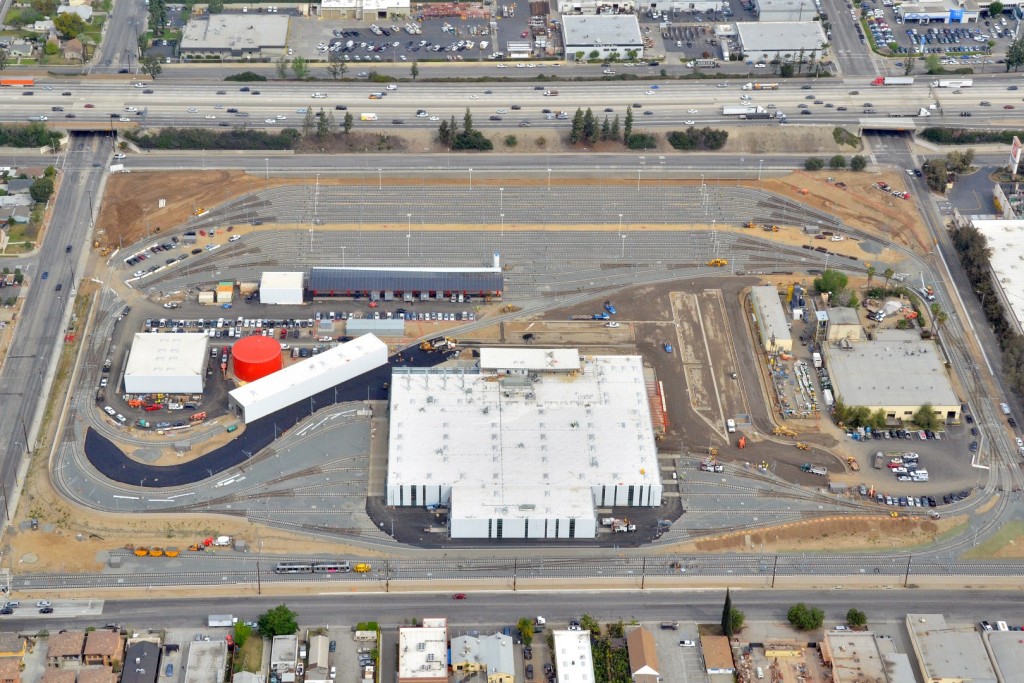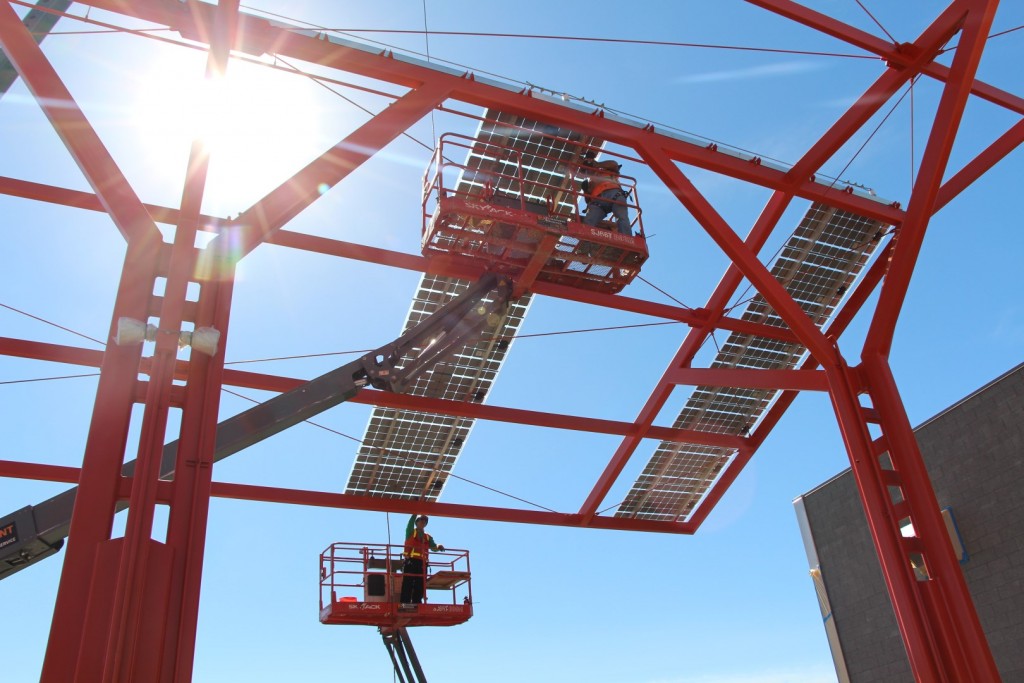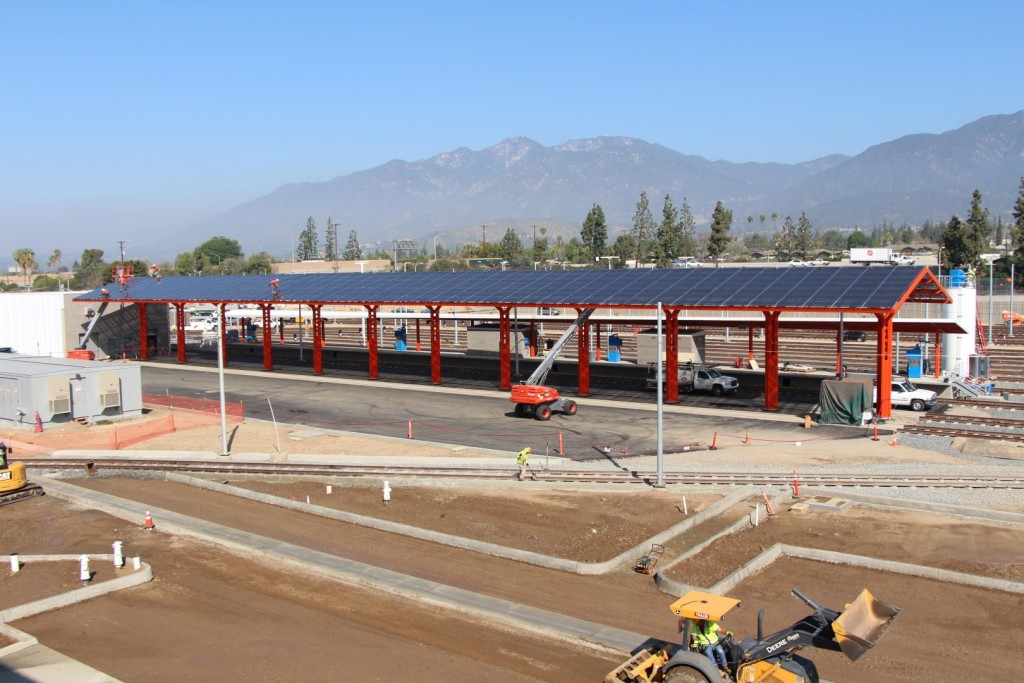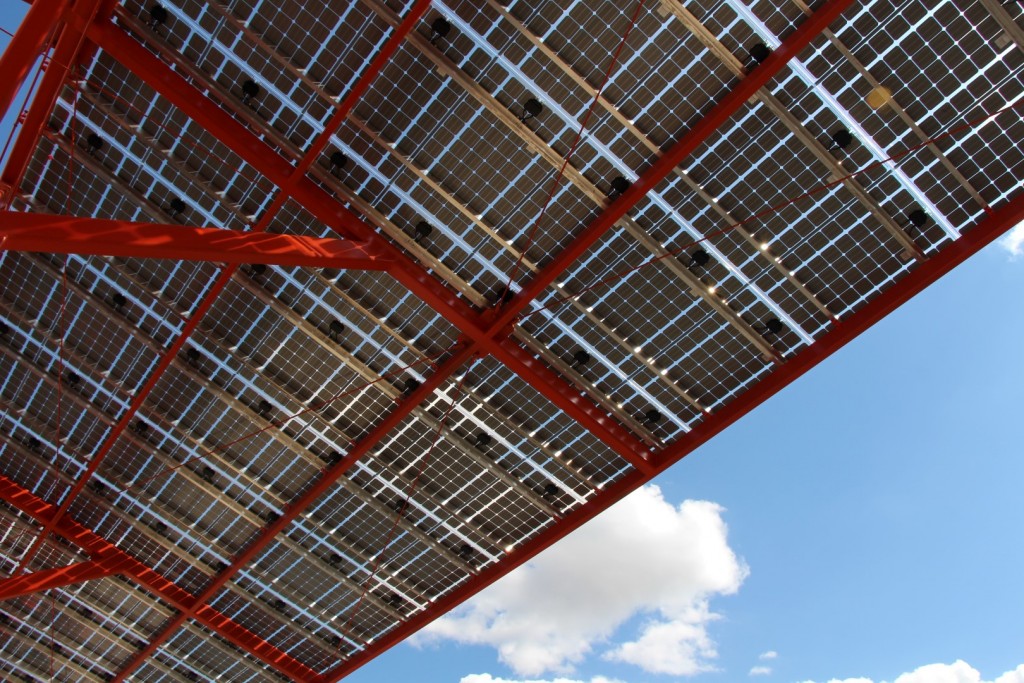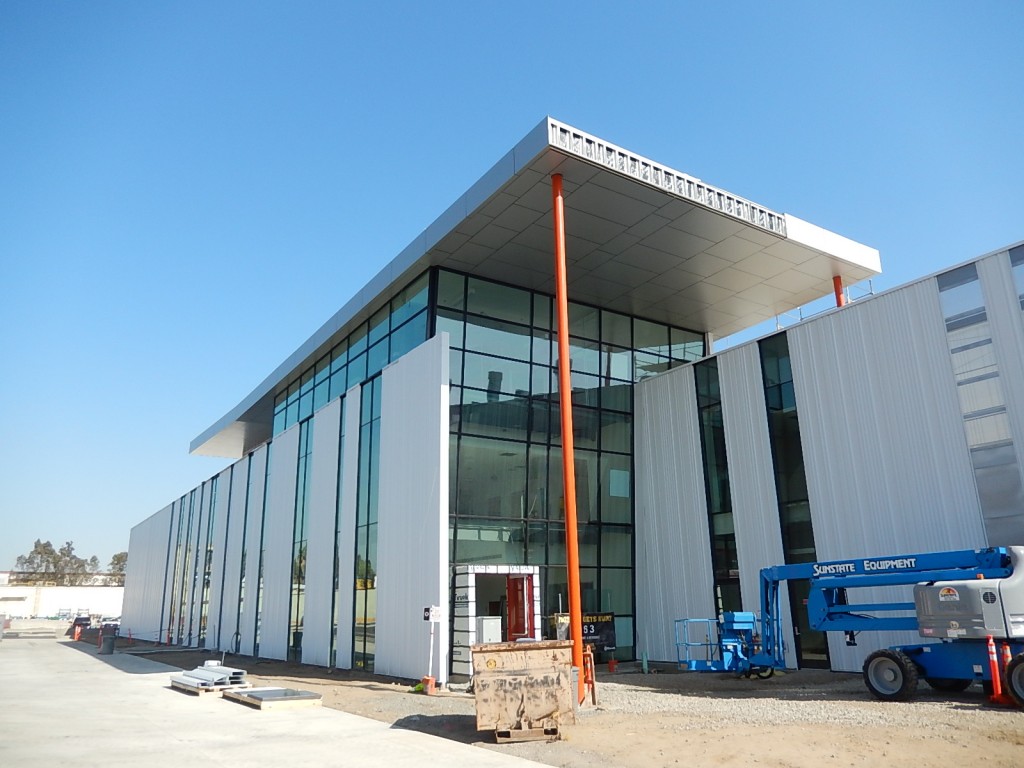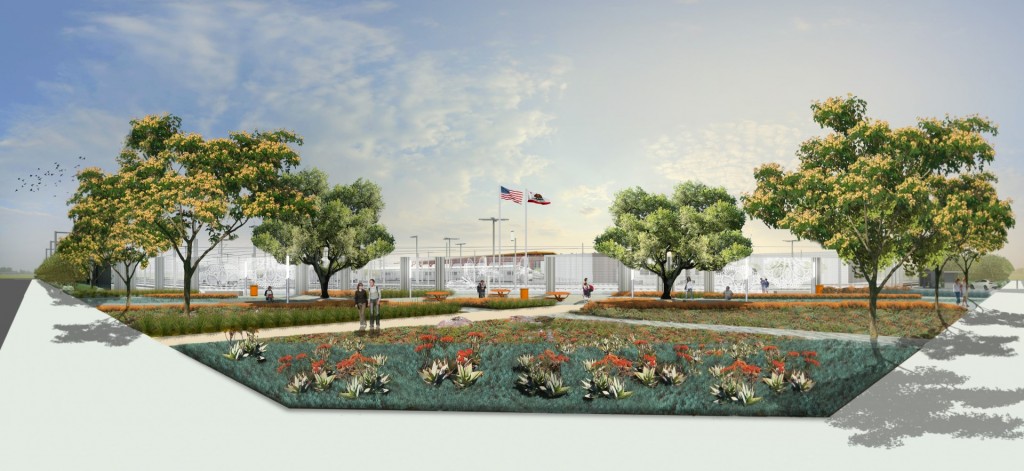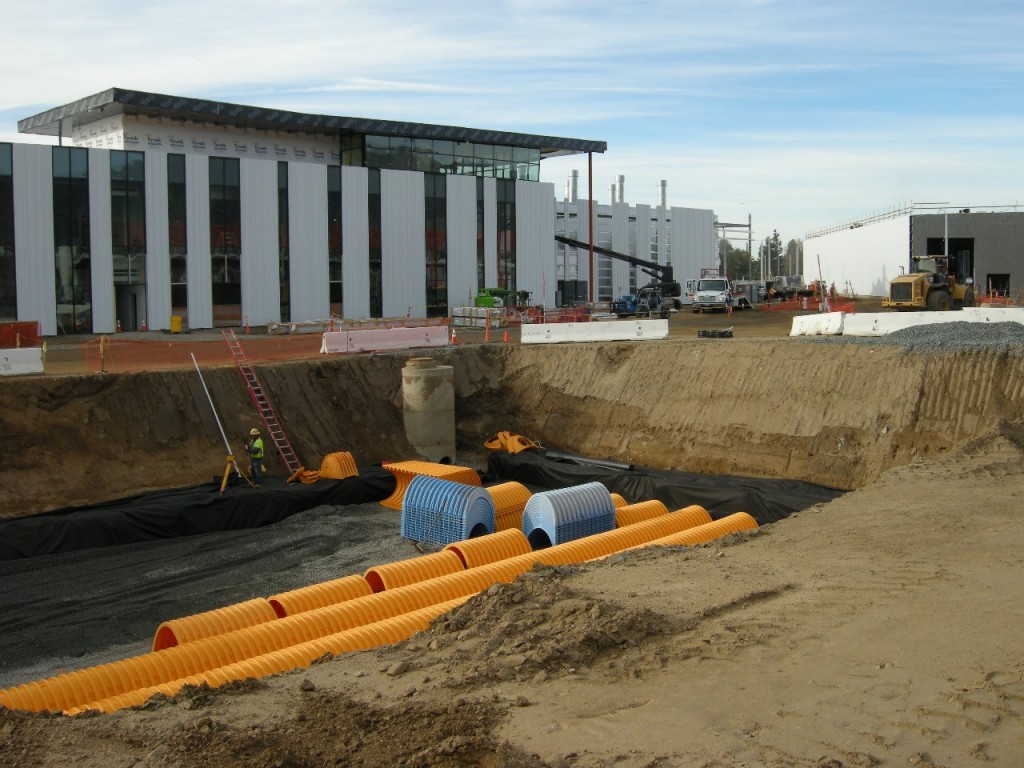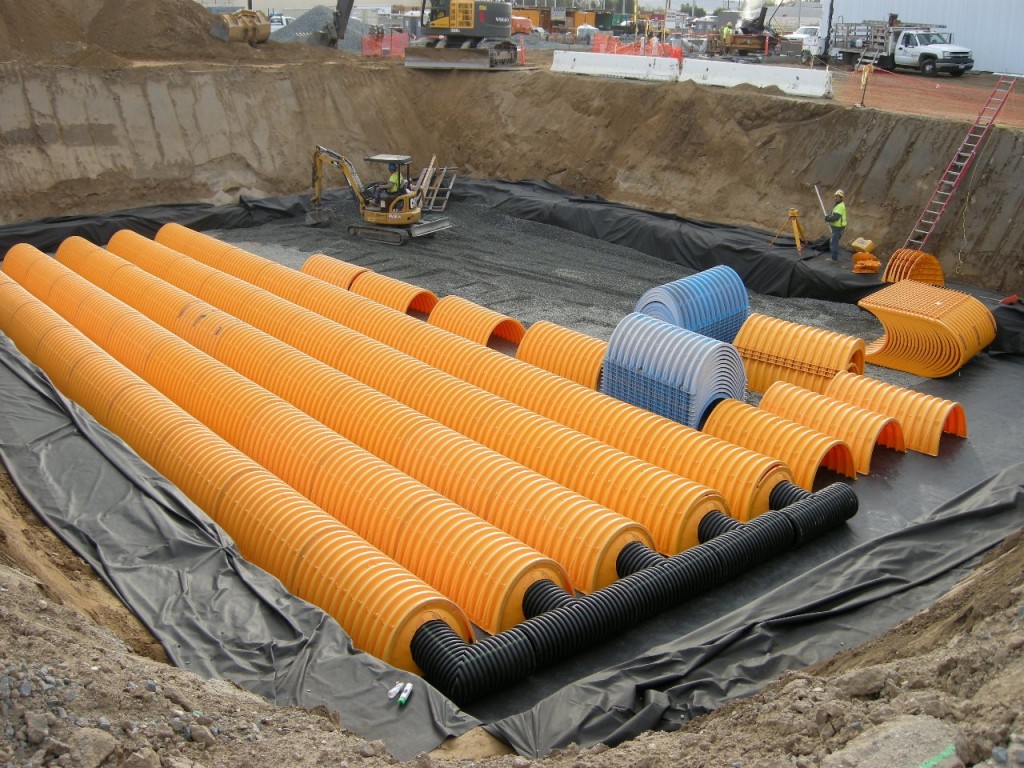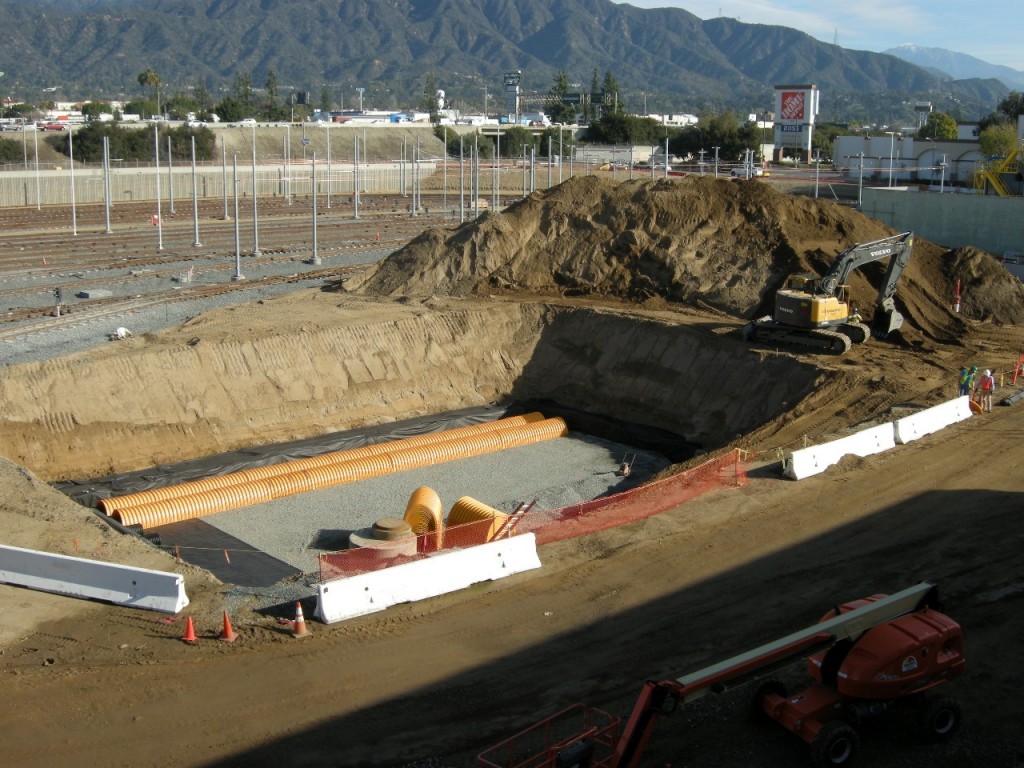As part of Earth Month 2015, the Construction Authority this morning unveiled water conservation and sustainability features of the $265-million, state-of-the-art Gold Line Operations Campus which is just a few weeks away from completion. Built as part of the 11.5-mile Foothill Gold Line light rail project from Pasadena to Azusa, the 24-acre campus will house up to 84 light rail vehicles and nearly 200 employees over several shifts a day.
Here’s a look at how the campus was designed to be friendly to our environmental and natural resources:
Designed and Built to Meet LEED Gold Standards
The Gold Line Operations Campus is one of the only one of its kind designed and built to meet the U.S. Green Building Council’s LEED (Leadership in Energy and Environmental Design) Gold standards, one of the highest standards of sustainable development.
- The 132,000 square foot Main Shop Building is projected to achieve 35% more efficient water usage and 32.5% more optimized energy performance than a typical building of its kind.
- Nearly a third of the electricity needed for the Main Shop Building will be powered by an on-site “solar power array:”
- The 178.5-kilowatt solar panel array will generate an average of nearly 22,000 kilowatt hours per month of electricity – enough to fully power on average more than 24 homes.
- If not immediately utilized on-site, the power generated by the Gold Line Operations Campus solar array will be made available to the local electric grid.
- The Main Shop Building also reduces electricity consumption by incorporating skylights that track sunlight, sensors that detect human motion as well as the level of ambient light entering from the skylights and adjusts the high-efficiency LED lighting accordingly to minimize the use of electricity. Energy performance will also be closely monitored by sub-meters.
The Campus has Reduced Fresh Water Consumption
With California’s ongoing historic drought, the team has found ways to reduce water consumption throughout the Gold Line Operations Campus:
- The large carwash facility (which uses an average of 60,000 gallons of water each day) will use only recycled, reclaimed water.
- The Main Shop Building will be able to achieve a 35% reduction in water consumption by using high efficiency fixtures and infrared sensor faucets that dispense less water.
- Smart sprinkler technology that tracks the level of moisture in the ground, and planting of a variety of drought-tolerant plants, will reduce landscape water consumption on and around the campus by 50%.
Stormwater from the Site will be Fully Captured, Treated and Infiltrated for Groundwater
A comprehensive stormwater management system has been installed throughout the Gold Line Operations Campus to capture the first ¾-inch (112,000 gallons) of a 100-year storm event:
- The stormwater system utilizes an elaborate drainage system which captures all site and roof drainage and sends it through a Cyclonic Debris Removal System (CDS) that separates and removes contaminants. Once filtered, the water travels to large subterranean chambers built below the facility with open bottoms that allow the treated water to be detained and infiltrated into the groundwater aquifers below.
- In the event rainfall doesn’t reach the on-site drain systems, it will directly infiltrate through the permeable ballast and landscape areas.
Other Sustainability Elements
Building materials and practices for the Gold Line Operations Campus were selected to be sustainable, long-lasting, and environmentally friendly:
- Nearly 50% of the materials used in the construction of the campus are comprised of recycled materials, including 100% of the steel for the nearly six miles of light rail track installed on the campus.
- All of the track ballast, aggregate and concrete was locally sourced, to reduce the environmental impact of transporting materials long distances.
- The majority of materials and packaging disposed during construction were diverted away from the landfills to be repurposed and recycled.
- The Main Shop Building will use low-VOC (volatile organic compound) products and materials throughout the building to improve indoor environmental quality for its occupants.
Want to see some of these sustainability features close up? Attend the upcoming community open house, scheduled on Saturday, May 23, 2015 from 10 AM – 1 PM.

